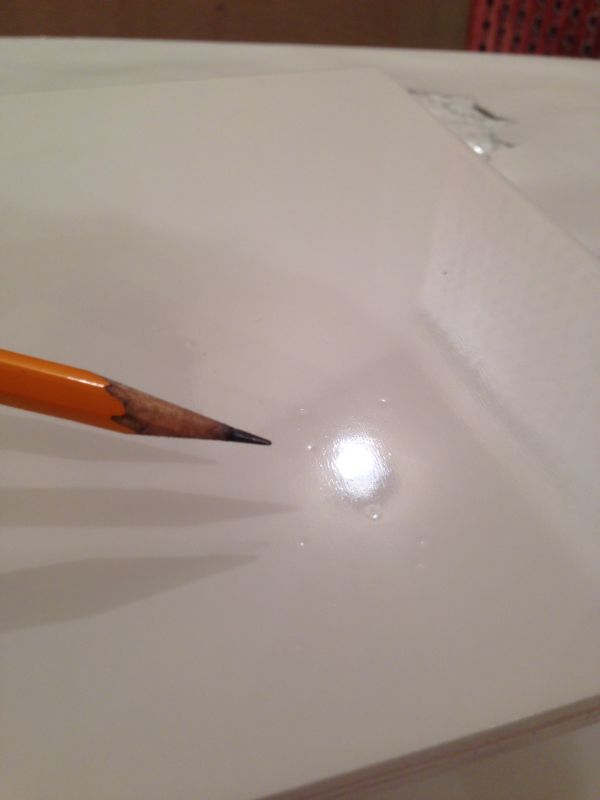Measuring and Mixing Catalyst
Tips and cautions for accurate mixing of catalyzed finishes. January 9, 2007
Question
We use Kremlin AAA units with 5 gallon pails and mixers. When we do small jobs, we put a clean liner in an empty 5 gallon pail and pour the post cat lac. It has to be catalyzed by volume, so we measure with a metric ruler, and add 10% catalyst. For example, if it reads 60 mm deep, we add 6mm of catalyst. Is there any other way that is quick and does not create huge amounts of dishes to clean up?
Forum Responses
(Finishing Forum)
From contributor G:
That's a small job indeed, 60 mm being less than 2 1/2 inches. Get some unused 1 gallon cans and mix your lacquer in there. Then set it inside your 5 and put the pickup in the lacquer can. Mixing, say, 1/2 gallon (1900 ml) becomes easy. Fill the gallon half way, add in 190 ml of catalyst (using a measuring cup or a beaker) and whatever thinner you want, put the lid on, give it a shake, and you're good to go.
From contributor W:
A note of caution: 5 gallon pails are not straight-sided; they're designed to stack and therefore are tapered, so an inch of finish at the bottom of the pail will be a lesser volume that an inch of finish near the top. Using your method, you're consistently over-catalyzing the finish. This might be a problem, it might not be, but you won't find out for sure on any given job for a year or so.
For smaller spray jobs with our Kremlins, we use contributor G's gallon can method; if agitation is needed, a couple of stirs with the intake tube does the trick.
From contributor S:
Accurate dispensing of the two components is important, so I collect any suitable plastic containers that can be used as measuring pots. Yoghurt and cream pots are useful, as they are available in 125, 250 and 500ml sizes and will quickly make up reasonable volumes. For small samples, the little graduated cups from night-time cold relief remedies are really good. Simply measure out into a suitable size of small container and stand this under the uptake in the bottom of the 5 gallon pail.
From contributor J:
You can also get a scale that measures up to 5000 grams. You can find out from your finish supplier what the amount of catalyst is in weight instead of volume and go that route.
